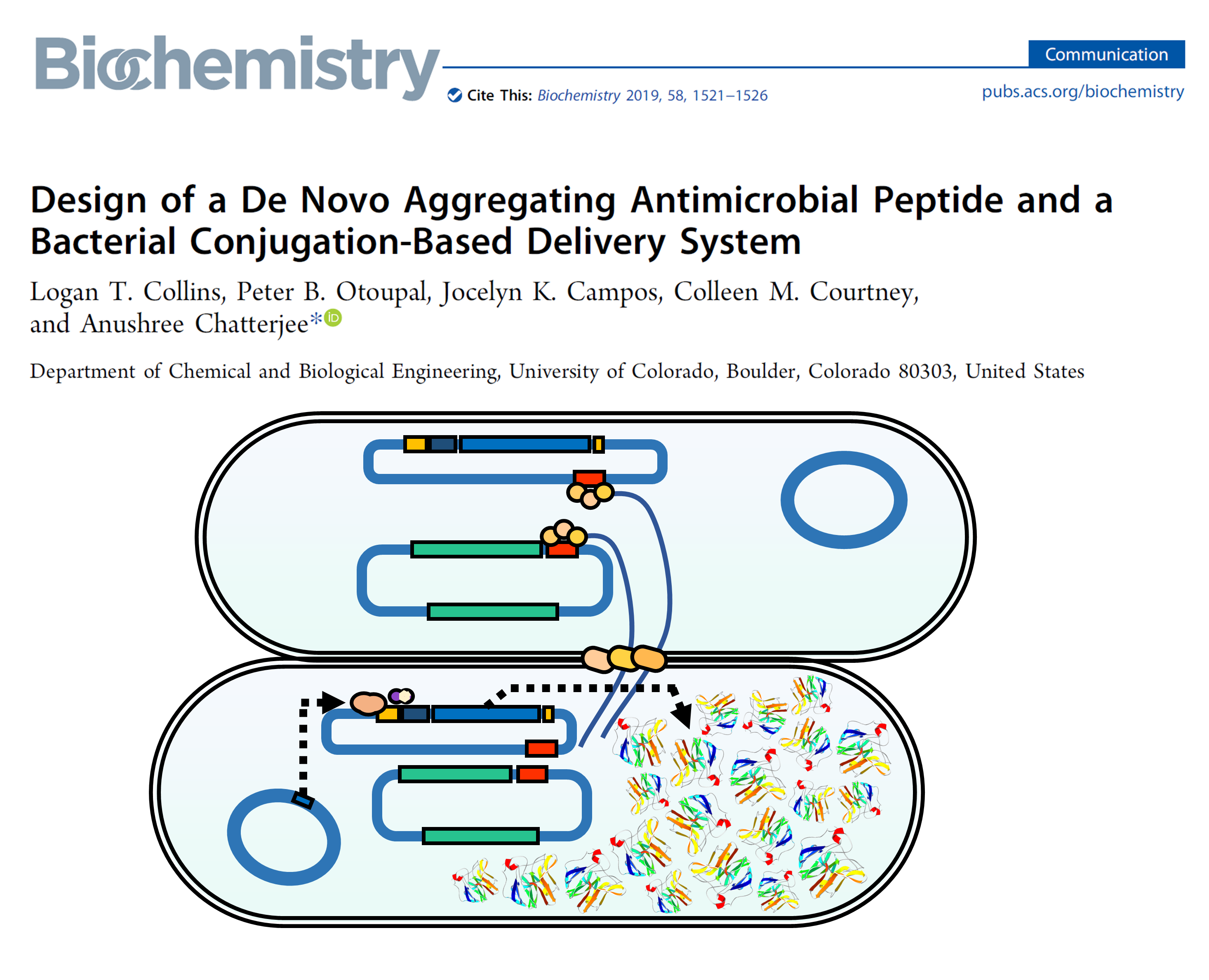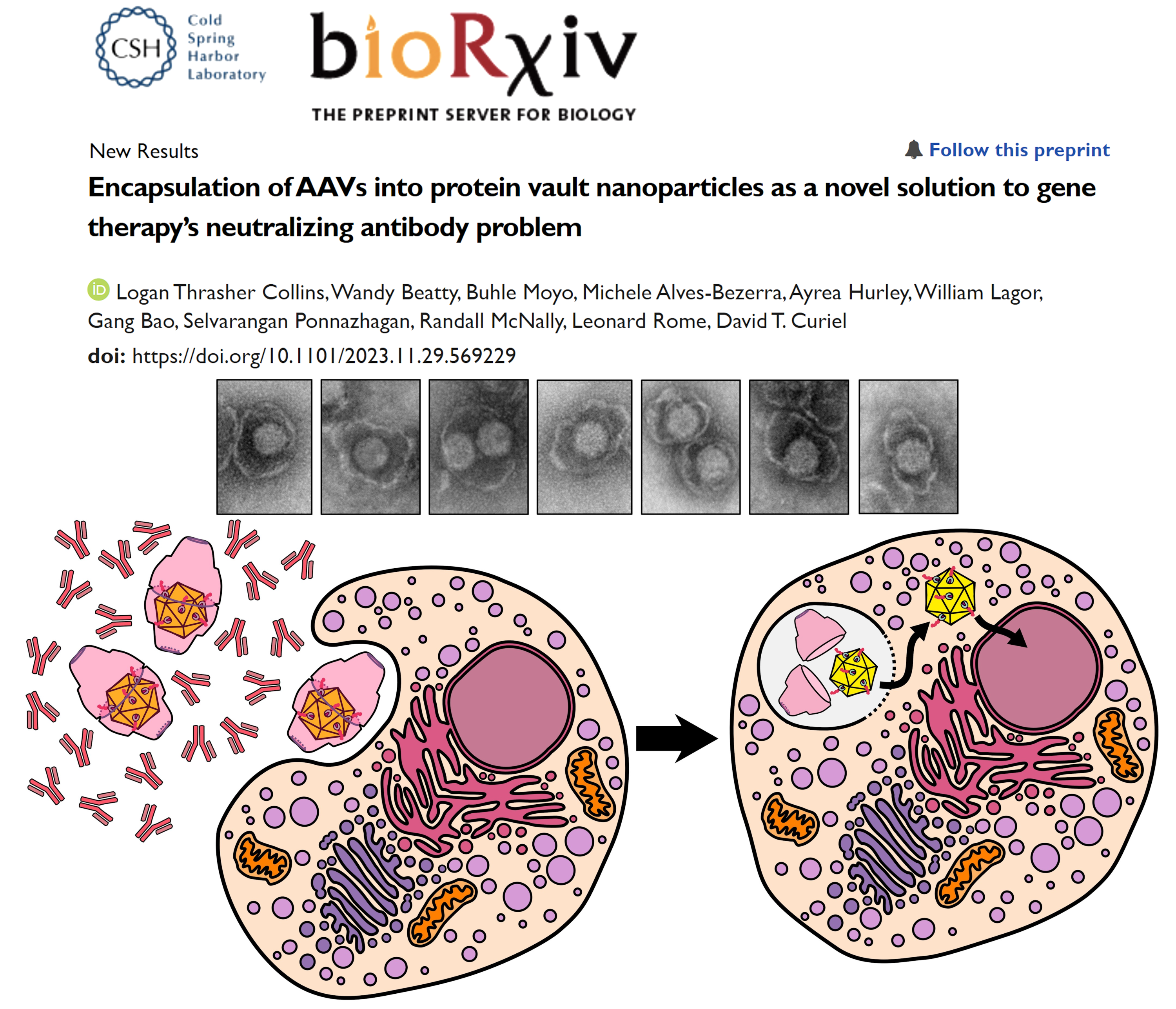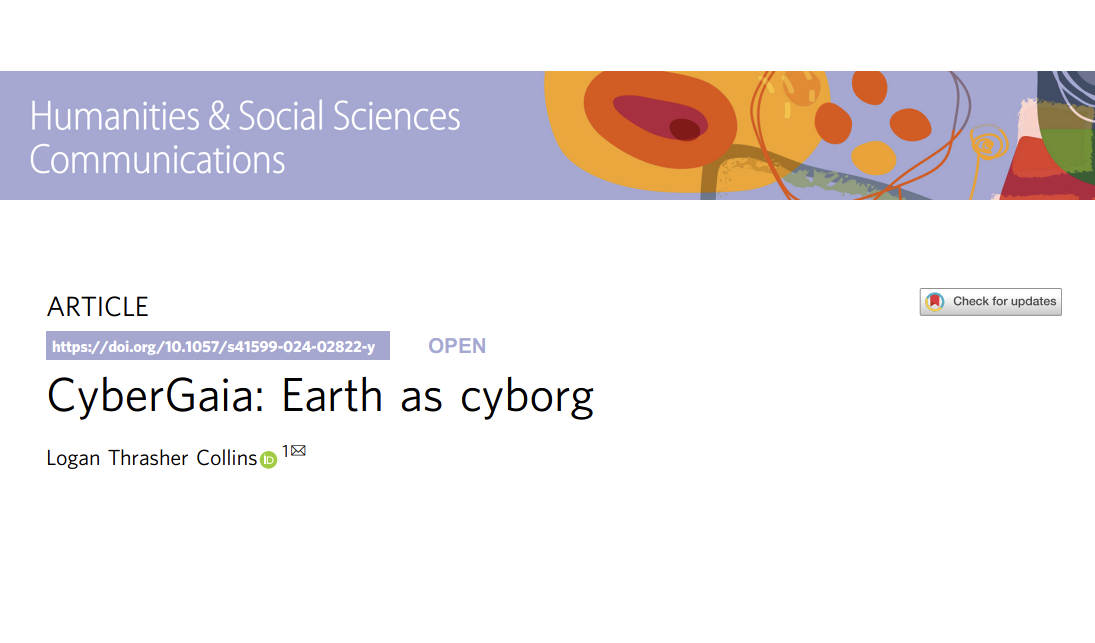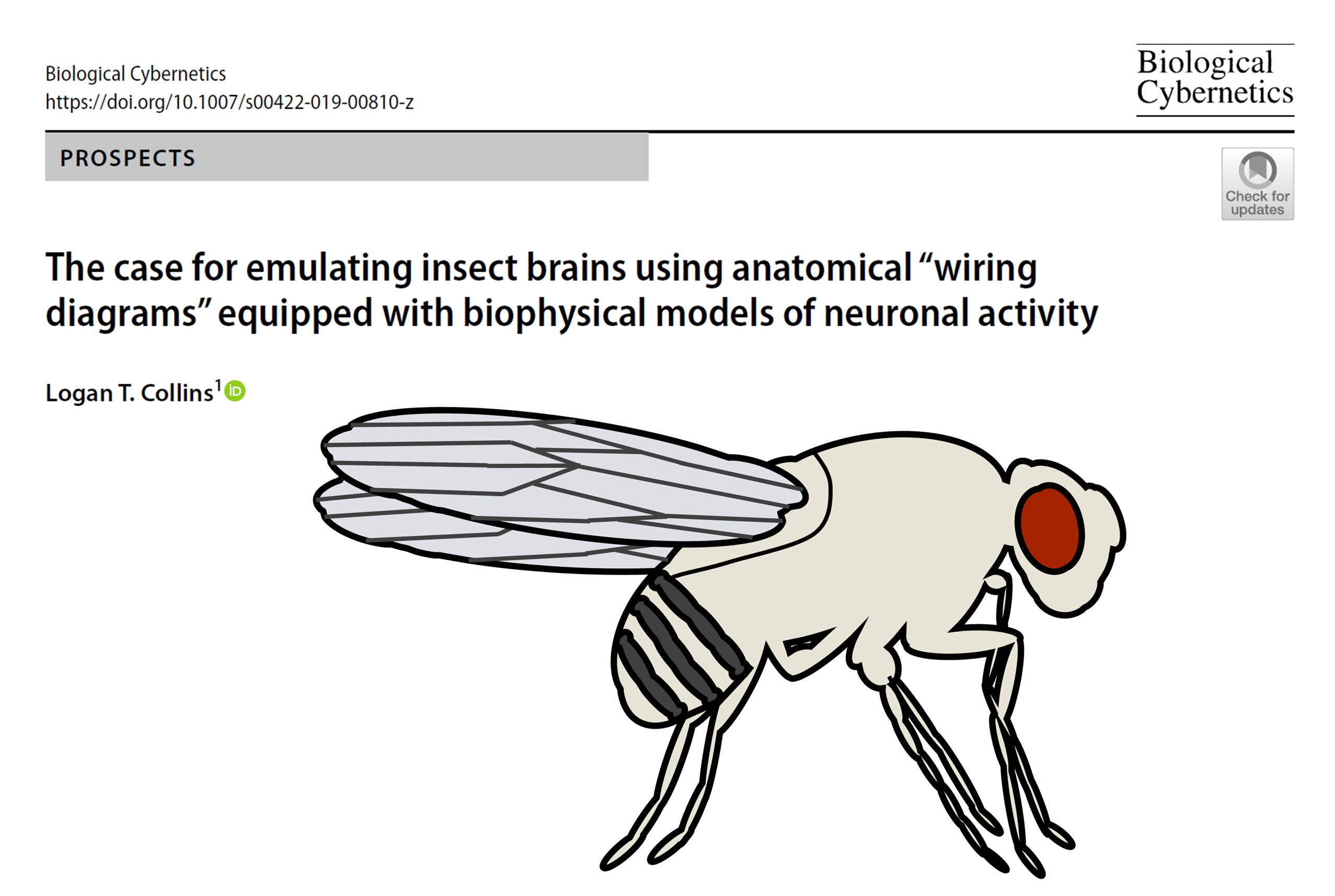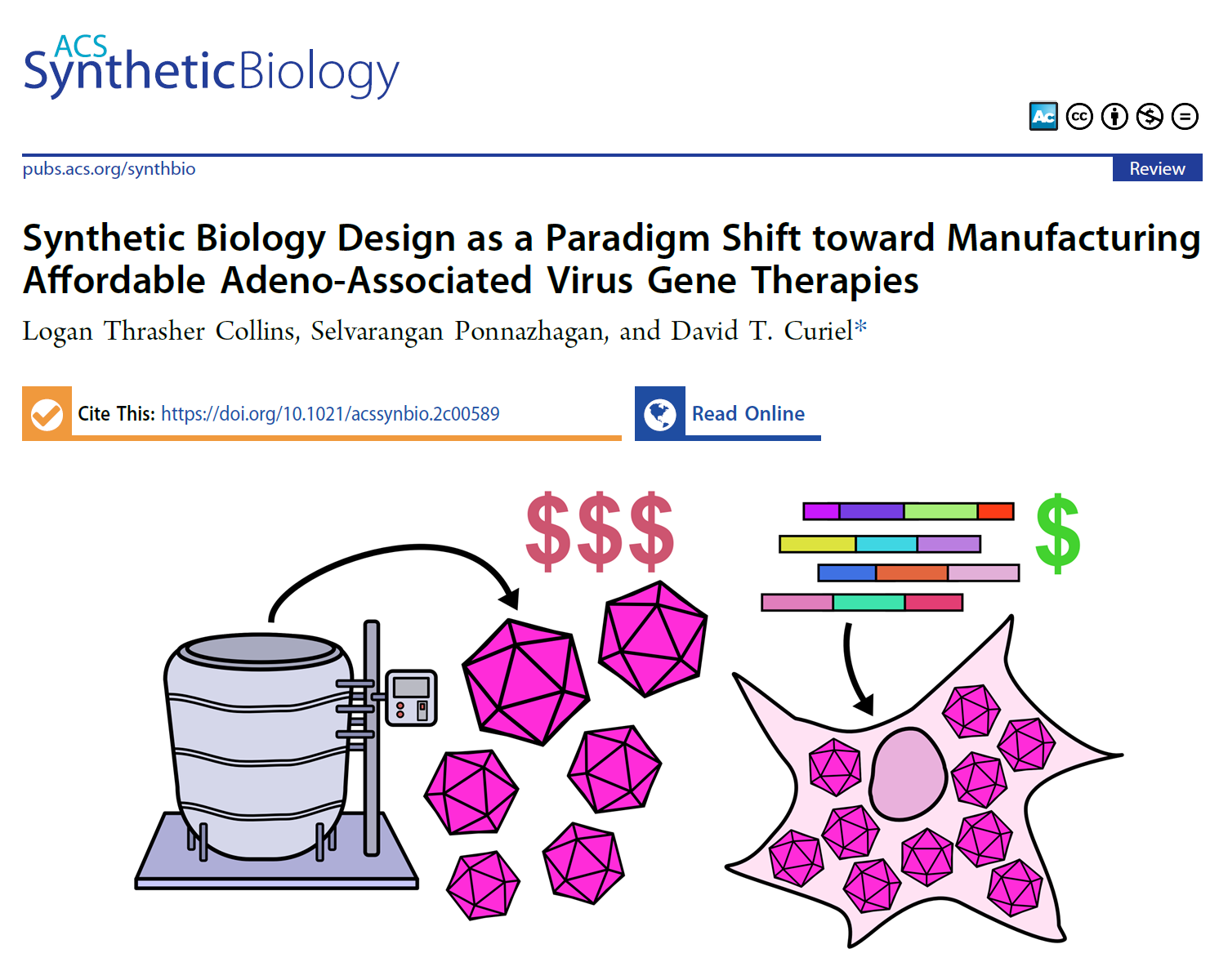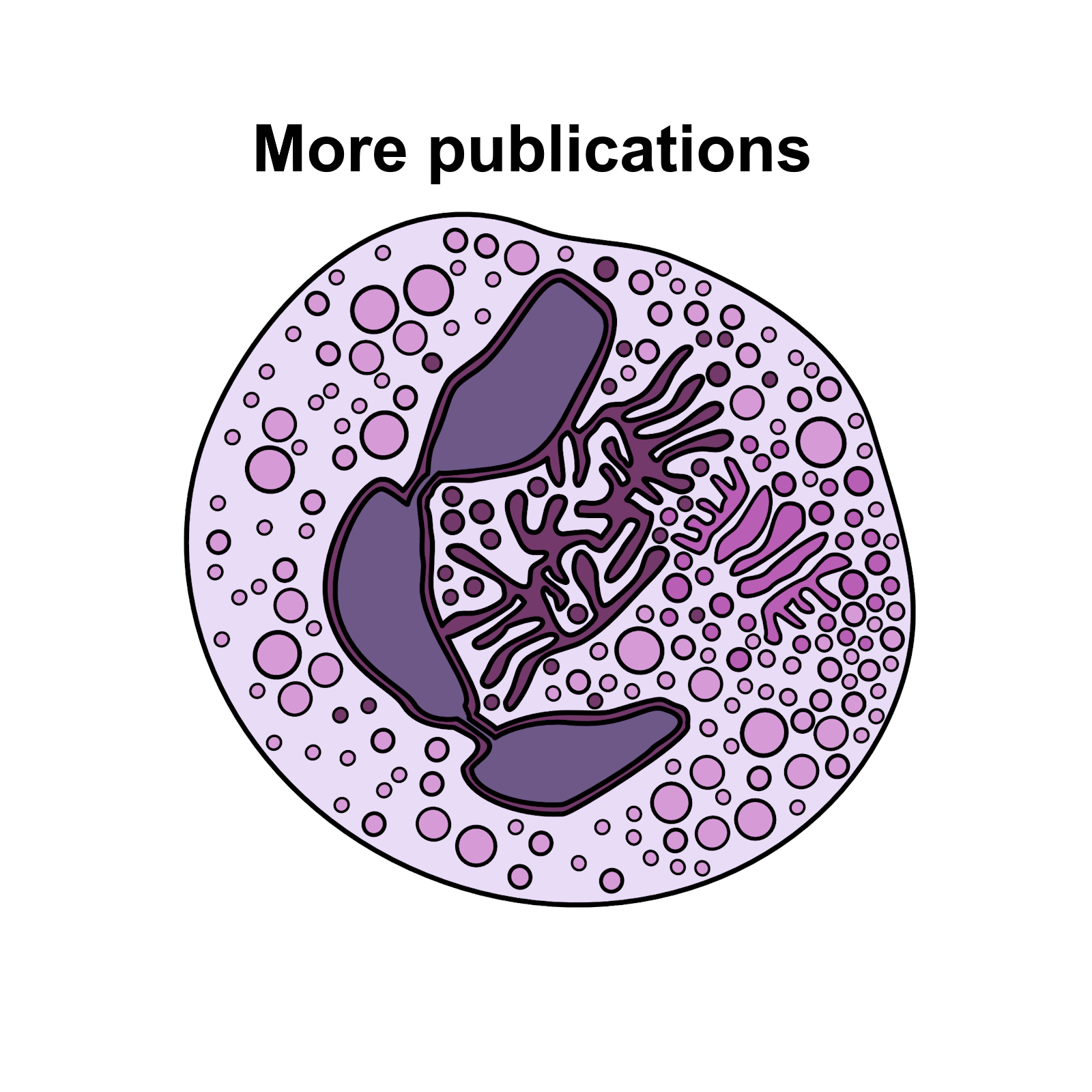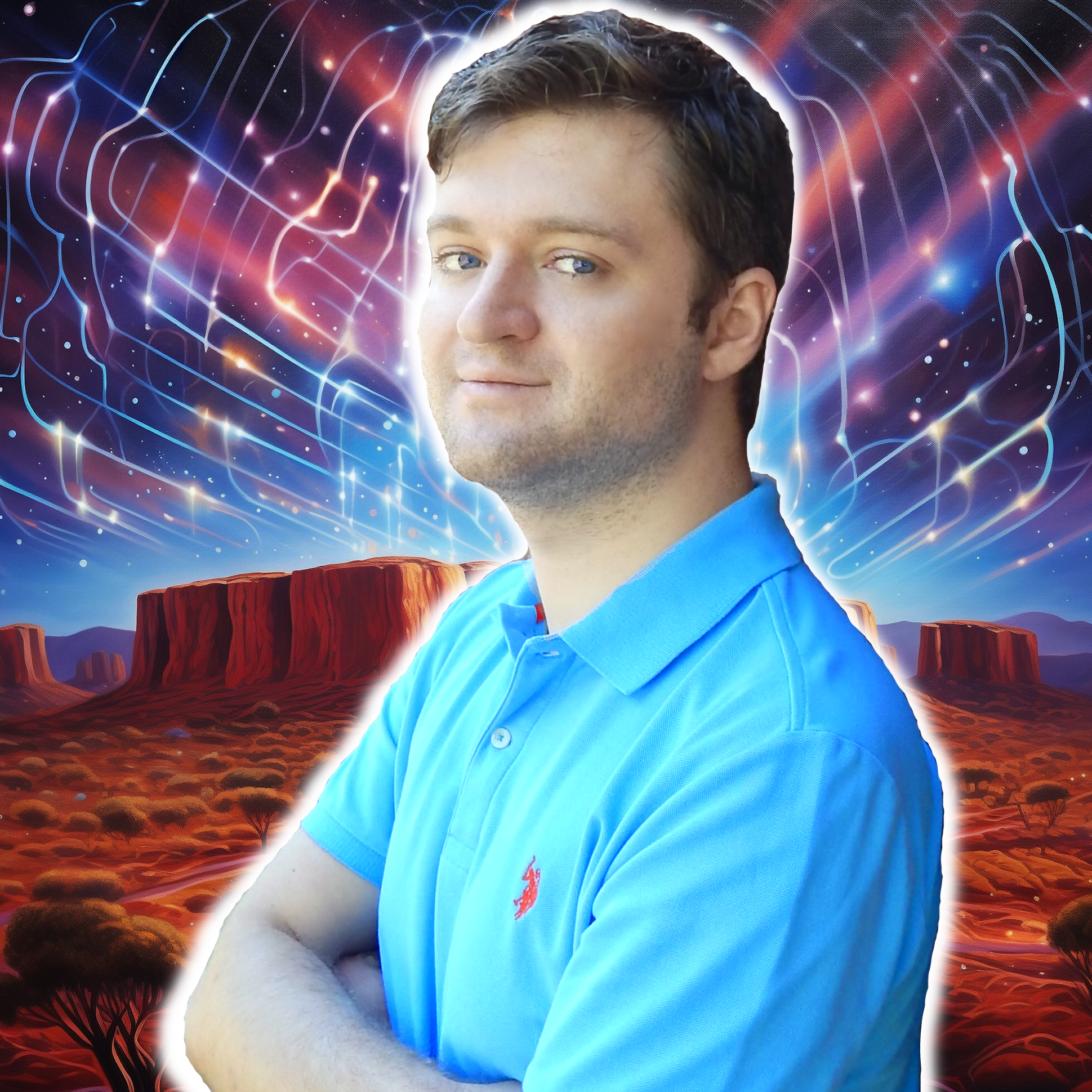
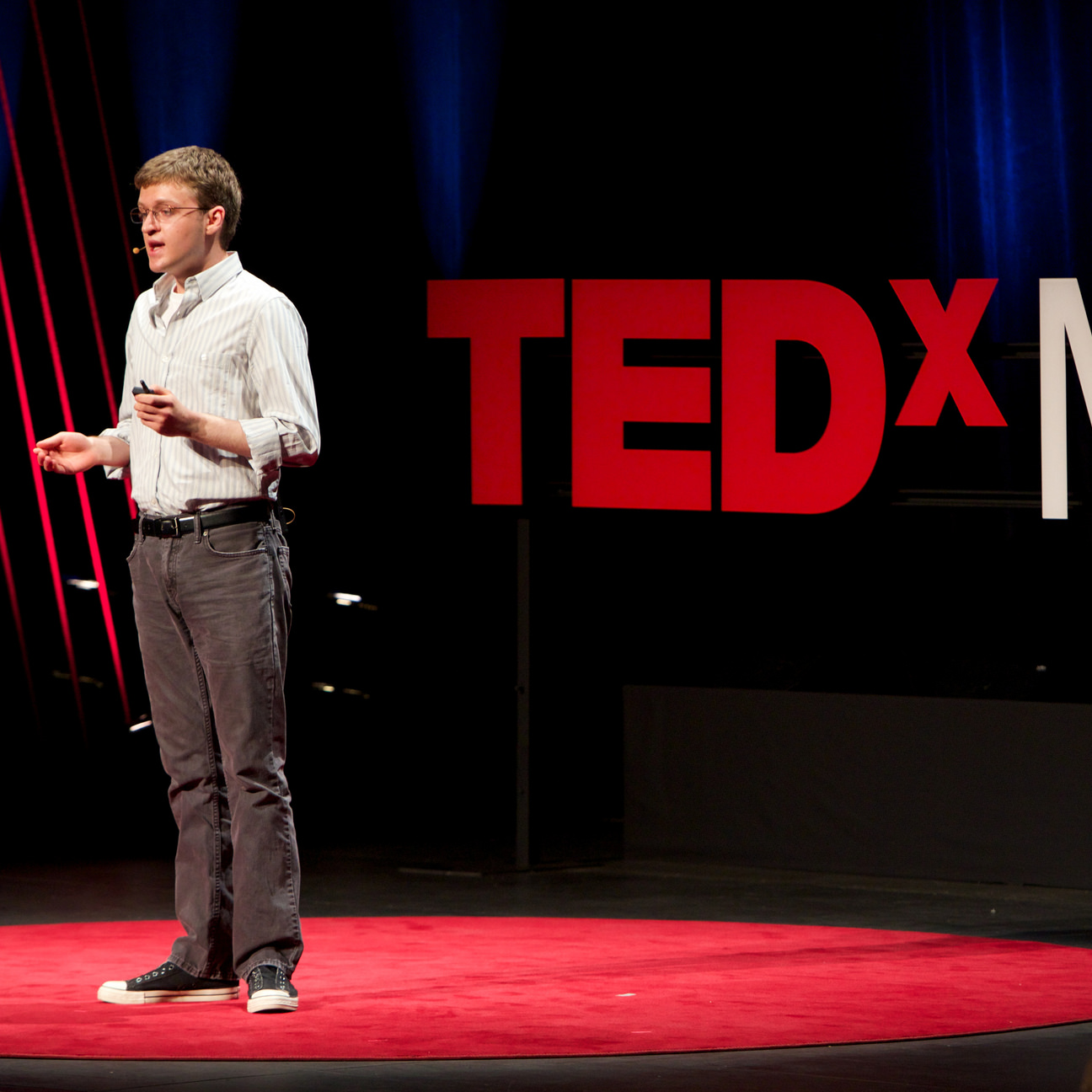
My name is Logan Thrasher Collins and I am working to make science fiction into reality and change the future for the better. I am a futurist, synthetic biologist, author, and innovator. I was also a 2023 Foresight Fellow.
When I was 16 years old, I invented a new antimicrobial protein, OpaL (Overexpressed protein aggregator Lipophilic). I next developed a bacterial conjugation delivery system for the gene encoding OpaL. My synthetic biology research has been published as a first-author journal article in ACS Biochemistry: “Design of a De Novo Aggregating Antimicrobial Peptide and a Bacterial Conjugation-Based Delivery System.” If you cannot access the full text, please use the following local file instead. This synthetic biology research has been recognized at numerous venues including TEDxMileHigh, the Intel International Science and Engineering Fair (ISEF), the International BioGENEius Challenge at the BIO International Convention, and at the American Society for Microbiology General Meeting. At Intel ISEF 2014, my synthetic biology research won 1st place in microbiology and best of category in microbiology ($8,000) as well as the Dudley R. Herschbach award. The latter included a trip to take part in the Nobel prize ceremonies via the Stockholm International Youth Science Seminar (SIYSS). As part of the honors at Intel ISEF, a minor planet was officially named Logancollins.
I am now a PhD candidate in biomedical engineering at Washington University in St. Louis where I am applying my background in synthetic biology and protein engineering to develop hybrid viral gene therapy platform technologies in Dr. David T. Curiel’s laboratory. I have developed a novel way of protecting adeno-associated virus (AAV) vectors from neutralizing antibodies using protein vaults. This is described in my first-author preprint “Encapsulation of AAVs into protein vault nanoparticles as a novel solution to gene therapy’s neutralizing antibody problem.” I have received NIH Ruth L. Kirschstein Institutional National Research Service Award grants to support my research (T32 and pending F31 grants). I am also developing hybrid adenovirus-AAV (AdAAV) vectors where multiple AAVs are covalently linked to adenovirus as a new way of co-delivering multiple genes to the same cell. For this project, I contributed heavily to writing an NIH grant for the Collaboration Opportunity Fund within the Somatic Cell Genome Editing Consortium. I furthermore wrote the main sections of an NIH R21 grant to support my vaultAAV research (now under review). In conjunction with my gene therapy research, I wrote a first-author review journal article which has been published in ACS Nano: “Synthetic Biology Approaches for Engineering Next-Generation Adenoviral Gene Therapies.” I also wrote a first-author review/perspective journal article which has been published in ACS Synthetic Biology: “Synthetic Biology Design as a Paradigm Shift toward Manufacturing Affordable Adeno-Associated Virus Gene Therapies.” This review/perspective was featured in a piece by GEN Genetic Engineering & Biotechnology News. Finally, I am working on two other gene therapy projects which are currently at early stages of development.
I am also working in the field of connectomics (brain mapping). During my time as an undergraduate, I developed a nanotechnology-based contrast agent for imaging brain tissue via x-ray microtomography. I received a $26,000 award to develop this technology through the Beckman Scholars Program and I acquired some proof-of-concept data. I presented this research at the Society for Neuroscience conference and the Beckman conference. I also wrote a sole-author editorial journal article on insect brain emulation which has been published in Biological Cybernetics: “The case for emulating insect brains using anatomical ‘wiring diagrams’ equipped with biophysical models of neuronal activity.” If you cannot access the full text, please use the following local file instead. This paper proposes creating biologically realistic simulations of insect brains and details a possible path towards that goal. As a 2023 Foresight Fellow in the Neurotech category, I have performed quantitative comparative analyses among imaging modalities for connectomics (manuscript in preparation) and I have developed a detailed proposal for a possible route towards imaging mouse and human connectomes (see Feasibility of mapping the human brain with expansion x-ray microscopy). To this end, I have established collaborations with people at EMBL Rome and EMBL Hamburg as well as with PanLuminate and I have raised $20,000 of funding (from the Foresight Institute’s AI Safety grant program) to acquire proof-of-concept data for expansion x-ray microscopy. I hope to obtain proof-of-concept imaging data for expansion x-ray microscopy over the course of the next year. If these data are promising, I will seek ways of scaling up to larger tissue volumes and eventually whole brains.
As someone who has always had a passion for bridging across the sciences and the humanities, I have written in the academic philosophy space as well. I am particularly interested in the philosophy and ethics of technology. To this end, I published a paper titled “CyberGaia: Earth as cyborg” in the peer-reviewed journal Humanities & Social Sciences Communications. In the future, I am interested in expanding my writings to further academic publications in this area as well as to potentially writing books on philosophy, technology, and the future to communicate with the public.
I previously worked as Chief Technology Officer (CTO) at Conduit Computing. At Conduit, I led a nonprofit discovery-oriented supercomputing project which allowed visualization of how the constituent proteins of SARS-CoV-2 work to construct whole viruses. For this research, I am the first author (and corresponding author) on a journal article which has been published in the ACS Journal of Physical Chemistry Letters: “Elucidation of SARS-Cov-2 Budding Mechanisms through Molecular Dynamics Simulations of M and E Protein Complexes“. My and my team’s paper gives mechanistic explanations of SARS-CoV-2 budding and provides a foundation for the development of drugs which might treat COVID-19 and similar diseases. The story of this research starts at the beginning of the pandemic when my original grant proposal was accepted by the COVID-19 HPC Consortium. The consortium is a U.S. government initiative which brought together supercomputer resources from academia and industry to help fight the COVID-19 pandemic. My team was matched with Frontera, the 4th most powerful supercomputer in the world at the time we were matched. We used this supercomputer to implement our simulations of coronavirus budding. I was featured by the computing news site HPCwire as well as by Re.engineer Magazine for my work leading this project. Also at Conduit, I led design of a novel home diagnostic for infectious diseases (including SARS-CoV-2) called nanoSPLASH. Though nanoSPLASH is still at an early R&D stage, it has potential to empower people to diagnose numerous different types of infections at home in less than thirty minutes. I am listed as the lead inventor on a full patent describing nanoSPLASH. Conduit continues to seek ways of further developing and commercializing the device.
In addition to research, I write science fiction and sci-fi poetry. For me, writing is both intrinsically rewarding and helps to stimulate my imagination and shape my scientific endeavors. My writing fuels my science and my science fuels my writing.
My published sci-fi poems include The Sonata Machine (Andromeda Spaceways Magazine), Neuraweb (Abyss & Apex Magazine), Neuva Shikaga (Altered Reality Magazine), Gorgeous Geometries (Altered Reality Magazine), cyberjinn (Altered Reality Magazine), Glimmerglimpse (Mithila Review), Electrocologies (Mithila Review), and Foreversong (Silver Blade). Neuraweb has been nominated for the Pushcart Prize and the Rhysling Award. In addition, The Sonata Machine has been reprinted in Altered Reality Magazine.
My published short fiction pieces include Events after the life of Edgar (The Centropic Oracle), Honeybee and the Blot (Theme of Absence), Relinquish / Metamorph (365tomorrows), Queen of the Universe (Aphelion), Mahabbah (After Dinner Conversation), Oddballs (Across the Margin), The Incandescence of Her Simulacrum (Zooscape), Le Saga Electrik (All Worlds Wayfarer), The Gardener’s Dilemma (Silver Blade), La biblioteca de las estrellas (White Cat Publications), and The First Seed on Mars (Stupefying Stories). In addition, Honeybee and the Blot has been reprinted in Metastellar and Le Saga Electrik has been reprinted in Altered Reality Magazine. My poetry and fiction have furthermore been recognized in student-run literary magazines as well as (longer ago) the Scholastic Art and Writing Competition. I have written and am working on numerous other science fiction pieces.
I am an avid autodidact. I have independently studied a wide array of topics such as molecular biology and genetics, applied probability, biochemistry, microbiology, digital artwork, endocrinology, protein engineering, MATLAB and Python, science fiction, CRISPR biotechnology, graph theory, insect neuroscience (i.e. Drosophila and bees), computational neuroscience, quantum mechanics, topology, medicinal chemistry, nanotechnology (e.g. nanoparticle superlattices and upconversion nanoparticles), techniques in microscopy (i.e. light-sheet and two-photon), optics and microscopy, digital electronics, Lagrangian and Hamiltonian mechanics, structural virology, molecular virology, and many more.
My personal philosophy most closely aligns with transhumanism, radical centrism, positive existentialism, rational romanticism, scientism, liberal feminism, regulated capitalism with social safety nets, secular humanism, technogaianism and bright green environmentalism, longtermism, technological utopianism, technoprogressivism, physicalism, panpsychism, and kindness.
In the long term, I plan to gain a position as a professor at a top research university. I also intend to collaborate with industry to bring my research towards its real-world applications. My primary goals are to positively impact people’s lives with my inventions and discoveries and to help protect the long-term future of humanity.
I am actively working towards making the future the best that it can be. Get your head in the clouds, the future is only limited by the imagination!
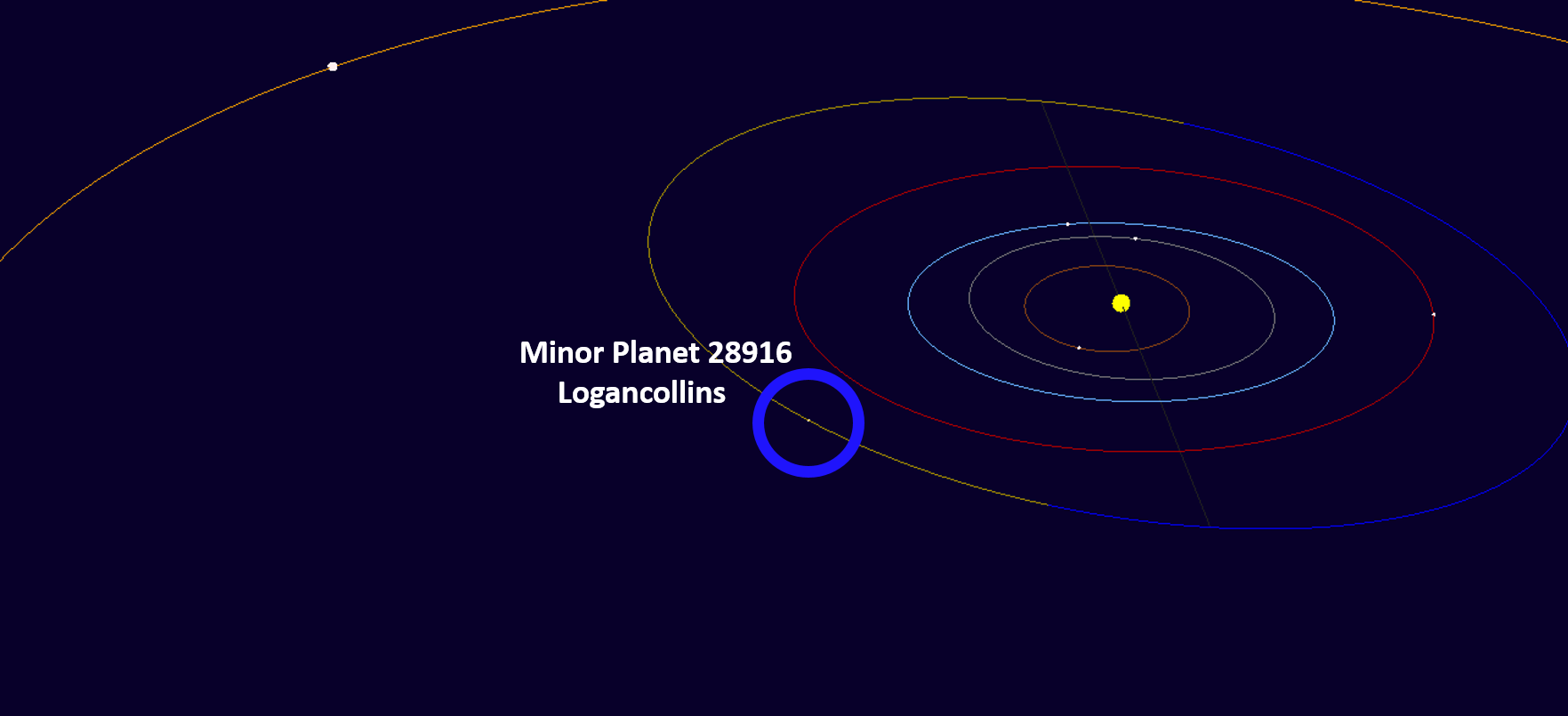
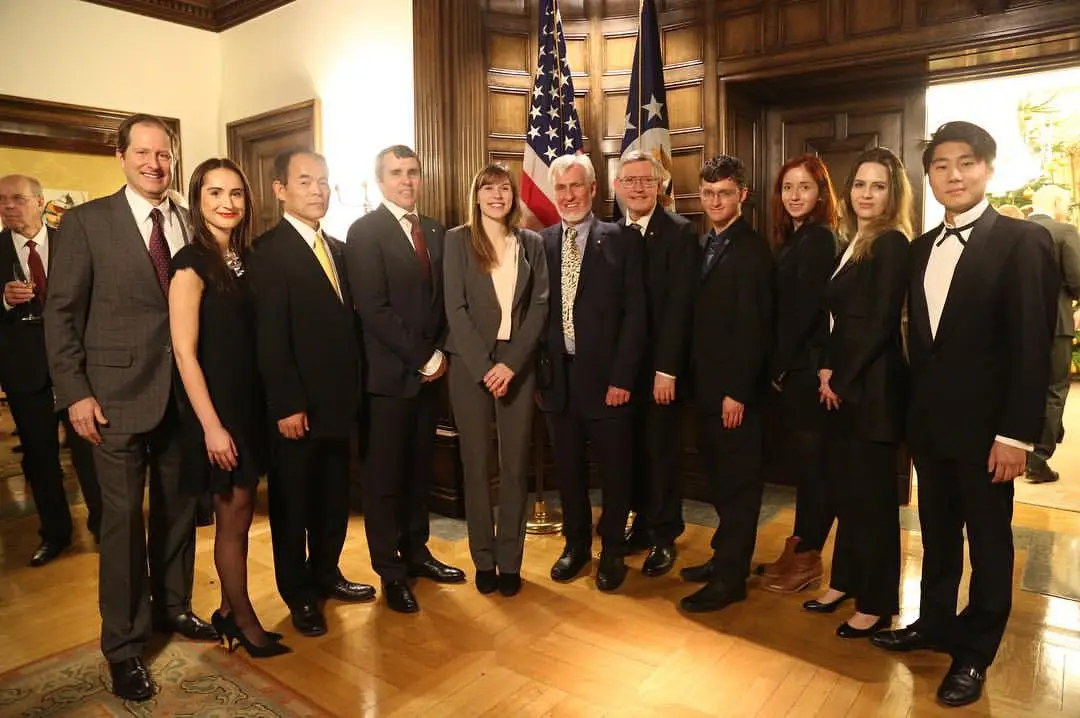
Some educational YouTube videos I prepared that explain exciting nanotechnology papers:
